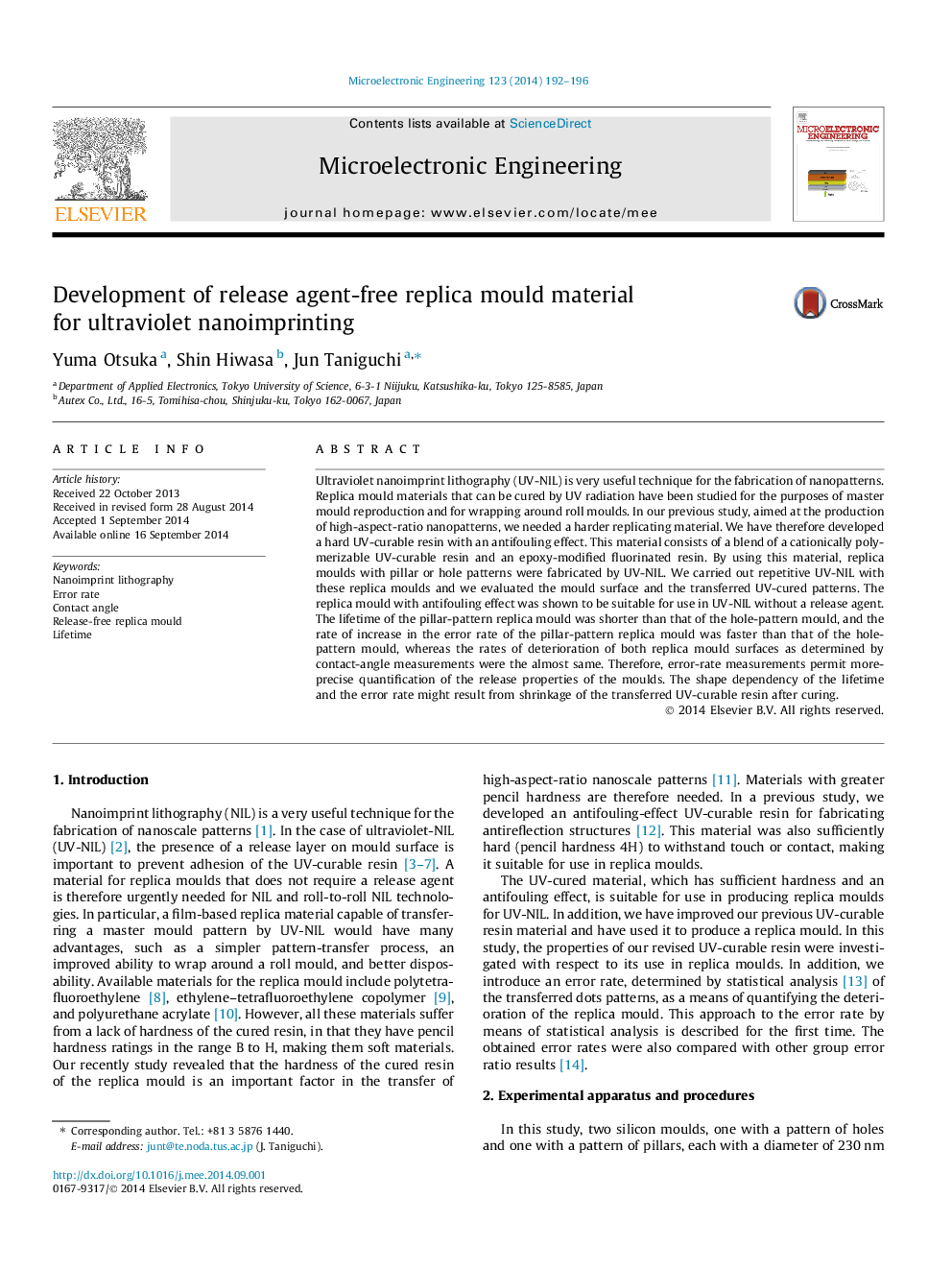| کد مقاله | کد نشریه | سال انتشار | مقاله انگلیسی | نسخه تمام متن |
|---|---|---|---|---|
| 539422 | 1450358 | 2014 | 5 صفحه PDF | دانلود رایگان |
• NIL is high throughput and low cost to production of high-aspect-ratio nanopatterns.
• We have therefore developed a hard UV-curable resin with an antifouling effect.
• It to perform as a release-agent-free replica mould.
• We carried out repetitive UV-NIL with these replica moulds.
• We used the error rate as a way of quantifying the deterioration of the replica mould.
Ultraviolet nanoimprint lithography (UV-NIL) is very useful technique for the fabrication of nanopatterns. Replica mould materials that can be cured by UV radiation have been studied for the purposes of master mould reproduction and for wrapping around roll moulds. In our previous study, aimed at the production of high-aspect-ratio nanopatterns, we needed a harder replicating material. We have therefore developed a hard UV-curable resin with an antifouling effect. This material consists of a blend of a cationically polymerizable UV-curable resin and an epoxy-modified fluorinated resin. By using this material, replica moulds with pillar or hole patterns were fabricated by UV-NIL. We carried out repetitive UV-NIL with these replica moulds and we evaluated the mould surface and the transferred UV-cured patterns. The replica mould with antifouling effect was shown to be suitable for use in UV-NIL without a release agent. The lifetime of the pillar-pattern replica mould was shorter than that of the hole-pattern mould, and the rate of increase in the error rate of the pillar-pattern replica mould was faster than that of the hole-pattern mould, whereas the rates of deterioration of both replica mould surfaces as determined by contact-angle measurements were the almost same. Therefore, error-rate measurements permit more-precise quantification of the release properties of the moulds. The shape dependency of the lifetime and the error rate might result from shrinkage of the transferred UV-curable resin after curing.
Figure optionsDownload as PowerPoint slide
Journal: Microelectronic Engineering - Volume 123, 1 July 2014, Pages 192–196
